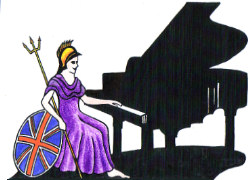Teachers, Accompanists and Piano Entertainers in the UK

UK Piano Page

Eldon Place
53 Preston New Road
Blackburn, Lancashire BB2 6AY
England
Established in 1986, Time and Tune has a
404 Marine Road East
Morecambe, Lancashire
England
We have a large range of acoustic and digital
20 Moorfield Drive
Baildon
Shipley, West Yorkshire BD17 6LQ
England
Cunningham Piano always has a varied selection of
Verve House
Sunningdale
Ascot, Berkshire SL5 0DJ
England
Handel Pianos is a family run business and our
Rickmansworth, Hertfordshire
England
Richard Lawson Pianos has been involved in the
Music Festival for performers and guests Our 10th
18-06-2022 12:30PM
The Morecambe Bay Piano Group was set up to extend
11-12-2021 01:00PM
The Morecambe Bay Piano Group was set up to extend
08-01-2022 01:00PM
The Morecambe Bay Piano Group was set up to extend
12-02-2022 01:00PM
Violin
A single violin is made from over 70 individual pieces of wood. the string tension is around 12 LBS compared to a pianos 160lbs on the steels and 20% more on the wound strings.